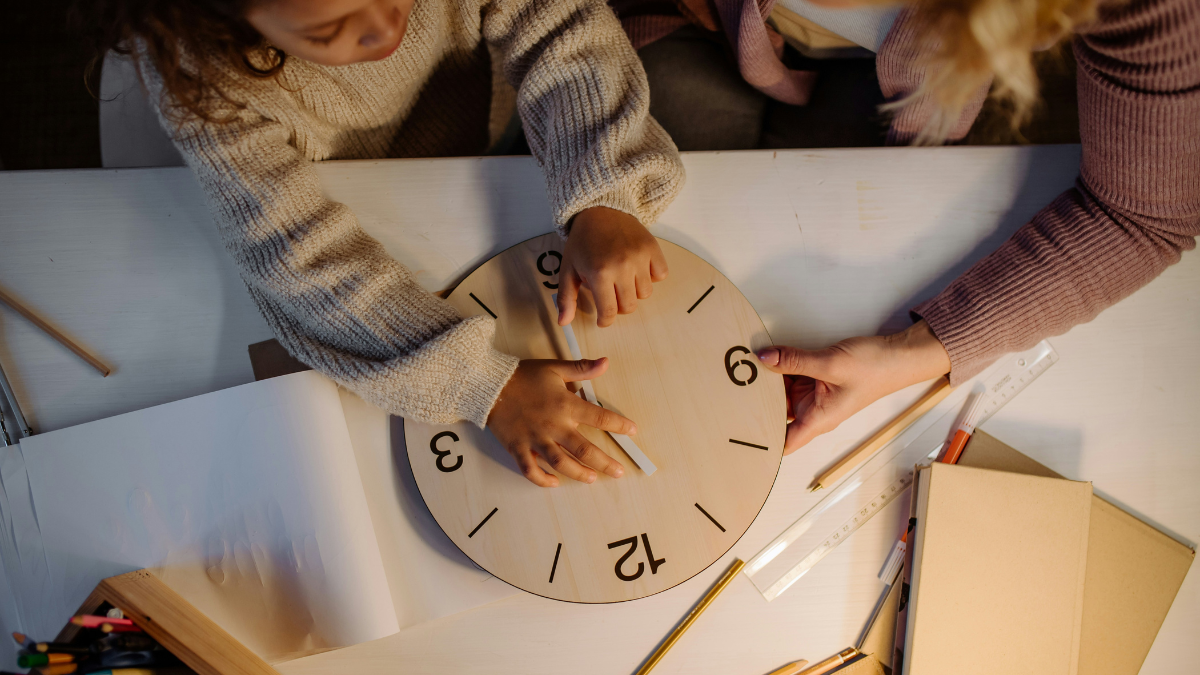

Leap Day: How Clocks and Calendars Shape Us
Thinking about our relationship to time from a Judeo-Christian understanding.
02/29/24
John Stonestreet and Glenn Sunshine

Throughout the Bible, for example in Galatians 4:4 or Paul’s speech to the “Men of Athens” recorded in Acts 17, God is described as a God of historical precision. He is outside of but fully in control of time and place. This distinctive of the Judeo-Christian understanding of God stands in sharp contrast to pagan and polytheistic notions of deities and time, and dramatically shaped human history. Today, Leap Day, is an appropriate day to think about our relationship to time.
One of the earliest examples of time anxiety in history is found in the French song “Frère Jacques.” In it, Brother James is rebuked for sleeping and not ringing the Matins bells at midnight. The song reflects the seriousness with which the Church took the times designated for prayer. Following Psalm 119:164, which says, “Seven times a day I praise you for your righteous rules,” monastic liturgies included seven set times for prayer.
Initially, given the changing length of day and night throughout the year, liturgical hours were not fixed. Instead, the Church regularized the hours by measuring the passage of time. By the 1200s, the mechanical clock was invented to keep pace with a chime that signaled when to ring the bells for the monastic hours.
Not long after, mechanical clocks appeared in city towers. In 1288, the predecessor to the tower clock known as “Big Ben” went up across from Westminster Abbey. In 1292, a clock was built in Canterbury Cathedral. The oldest surviving tower clock in England, dating to 1386, is at Salisbury Cathedral. In addition to time, these clocks often marked heavenly phenomena. The most elaborate surviving example is in Prague. Installed in 1410, this clock told time using a standard 24-hour day, as well as in “Italian time,” which put the 24th hour at sunset. Not only could this clock accurately track this time as it changed throughout the year, but it also showed the position of the sun on the ecliptic, the phase of the moon, the spring equinox, and stellar time.
The first reference to a pocket clock dates to 1462. Clocks worn as pendants emerged in the 1500s, and pocket watches emerged after 1675, when Charles II introduced the waistcoat to England as a standard item of apparel. Pocket watches remained a luxury item until the second half of the eighteenth century when they came into more general use. Clocks began to appear in houses about the same time.
As interesting as the history is, the implications of clocks for our relationship with time are far more important. With the industrial revolution, the clock increasingly controlled people’s lives. Before, farmers and craftsmen would set their own hours and work at their own pace. Once clocks appeared, work hours and pace were set by the factories. Efficiency improved, but often little regard was shown for the health and wellbeing of workers.
The advent of railroads further changed our perception of time. Traditionally, time was set astronomically, by when the sun was at its zenith at noon. Railroads, however, had to operate on a timetable. Thus, time zones became standardized over the objections of those who wanted to keep “God’s time.”
Among the other unintended results of these otherwise helpful tools are the eroding of traditional cultures and the breaking down of social classes. Fifty years ago, sociologist Peter Berger argued that the two most important elements undermining indigenous cultures were the ballpoint pen, or literacy, and the wristwatch, or an imported attitude toward time.
Like with mechanical clocks, calendar reform was also inspired by the needs of the Church, specifically the need to calculate the date of Easter, which was necessary to calculate the beginning of Lent, Palm Sunday and Holy Week, and the Feast Days of the Ascension and Pentecost. Setting the date of Easter required knowing the date of the spring equinox and the phases of the moon. The old Julian Calendar, which first introduced the idea of Leap Year, had accumulated enough errors over 1,500 years that the equinox was no longer near the theoretical date of March 21.
However, a reform of the calendar required an update to astronomy. This is among the factors that led Copernicus to develop a sun-centered model of the universe. It also led to the creation of the modern Gregorian calendar, which is far more accurate than the Julian calendar.
In other words, both the calendar and the development of mechanical clocks are rooted in the Church’s recognition of the need to see the world as sacred. Like the Sabbath and the feast of ancient Israel, time and seasons remind us that our lives are not ultimately our own and are instead part of the larger story of creation to redemption. In other words, as demanding as the clock can be, the Christian notion of time should help us from viewing the days of our lives in purely secular terms.
This Breakpoint was co-authored by Dr. Glenn Sunshine. For more resources to live like a Christian in this cultural moment, go to breakpoint.org.
Have a Follow-up Question?
Up
Next

Related Content

© Copyright 2020, All Rights Reserved.













